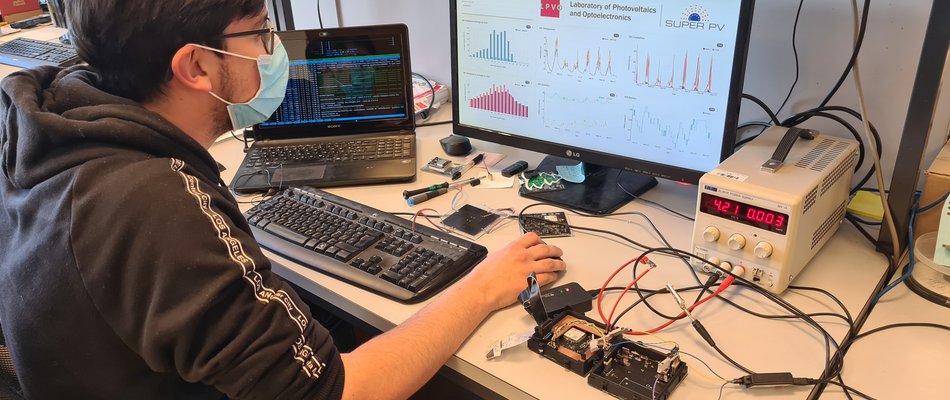In March 2020 Covid-19 pandemic stopped and later slowed down research and innovation across Europe. Horizon 2020 projects were no exception. Covid-19 became a new reality for everyone and everywhere – in each research laboratory within each project consortium.
In this contribution we reveal how the mission of research and innovation related to the SUPER PV project at the Laboratory of Photovoltaics and Optoelectronics (LPVO) within the University of Ljubljana has been affected by the pandemic. One of the tasks in the WP4 T4.4: Low-meteo and environmental monitoring concepts and intelligent sensors is to develop a low-cost stand-alone Meteo station, to be used for monitoring PV module performance in the field. The stand-alone Meteo station is an Internet of Things (IoT) device using wireless data transfer via a GSM mobile network. It acquires various kinds of environmental data, from air temperature to plane-of-array solar irradiance, while being solely solar powered. For that it includes a built-in battery. It turns out that its design is not an easy job, since every small chuck of milli Watt hour (mWh) consumed in vain is unnecessary wasted energy. That shortens its duration of autonomous operation and may cause it to fail in the worst-case scenario.
With pandemic changing the way we live and work, every aspect of the project was affected to some degree. During the total lockdown we were working on a hardware development and optimization. Naturally, designing a hardware is a job that requires a lot of different equipment and instruments to work effectively. And when you are forced to work from home that presents a huge problem causing your workplan to shift. What was, not that long ago, taken for granted is now becoming a privilege. Although slowly, we managed to make major steps towards the final goal. Electrical circuit was modified to minimize power consumption. Mechanical, we successfully soldered the back-contact solar cells for power supply and irradiance measurement, laminated the stack with all soldered components including the solar cells and tested it.
With a feeling of a little release, as we are now dealing with a more home-work friendly tasks, we are optimizing the code and minimizing the power consumption even further to reach our goal of self-sustainability. New firmware will also use new MQTT transmission protocol, which minimizes the data payload in low-power IoT systems. Additionally, we are implementing an external EEPROM which will enable us to save data for the most optimal time of transmission.
During these uncertain times, it is hard to keep up with the plan you had predicted at the beginning of the project. It is almost impossible to tell when the next surge in Covid-19 cases will force you to stay at home where you lack proper equipment and resources for future development. Hardware design proved to be challenging as you cannot really test and tinker with the prototype lacking the proper equipment. Although times are difficult, work must continue as well as it can. Every day we are implementing new features or fixing the problems they bring. Hopefully, these strange times will end soon, and we will be able to look back proudly at the accomplishments we achieved.

